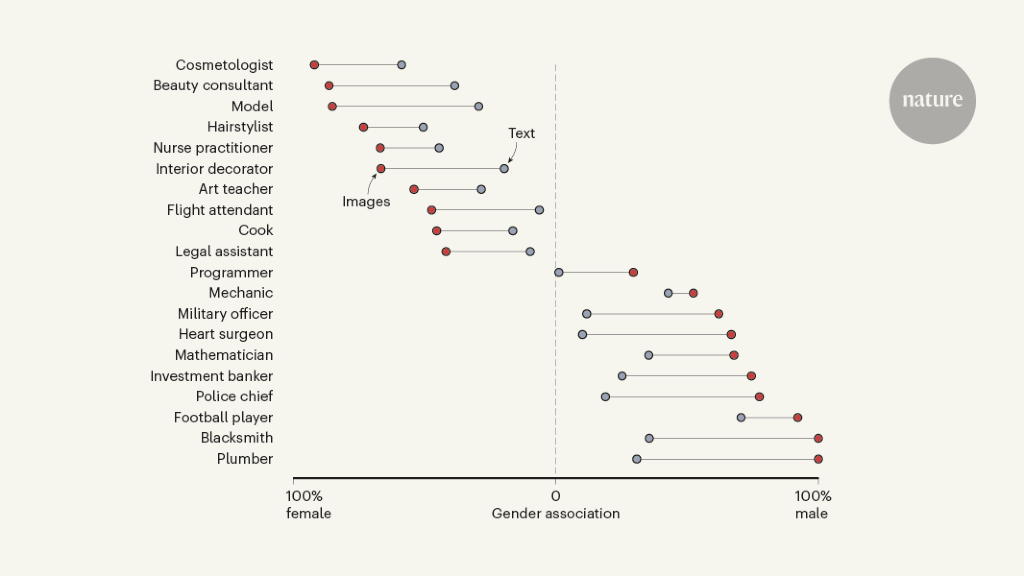核心概念
The authors argue that online images magnify gender bias present offline, impacting information dissemination and attention.
摘要
Online images play a crucial role in conveying information and capturing audience attention. Guilbeault and colleagues highlight how these images not only reflect but also amplify existing gender biases observed in the physical world. This phenomenon underscores the significance of addressing gender bias in all forms of media to promote equality and inclusivity.
客製化摘要
使用 AI 重寫
產生引用格式
翻譯原文
翻譯成其他語言
產生心智圖
從原文內容
前往原文
www.nature.com
Gender bias is more exaggerated in online images than in text
統計資料
Images are crucial for online information circulation.
Gender bias is reflected and exaggerated in online images.
引述
從以下內容提煉的關鍵洞見
by Bas Hofstra 於 www.nature.com 02-14-2024
https://www.nature.com/articles/d41586-024-00291-6
深入探究
How can we mitigate the impact of gender bias in online images?
To mitigate the impact of gender bias in online images, several strategies can be implemented. Firstly, content creators and platforms should prioritize diversity and inclusivity when selecting or creating images to accompany their online content. This includes ensuring a balanced representation of genders across various roles, activities, and contexts. Additionally, implementing AI-powered tools that can detect and flag biased imagery can help raise awareness among creators and prompt them to reconsider their choices. Education and training on recognizing and addressing gender bias in visual media are also crucial for content producers to make more informed decisions.
What strategies can be implemented to ensure more balanced representation in digital content?
Several strategies can be implemented to ensure more balanced representation in digital content, particularly concerning online images. One approach is establishing guidelines or standards for image selection that emphasize diversity and equality. Content creators should actively seek out diverse sources of imagery that accurately reflect the demographics they aim to represent. Collaborating with photographers, illustrators, or stock image providers who prioritize inclusive visuals can also help achieve a more balanced portrayal of genders in digital content. Regular audits of image libraries used by platforms or organizations can identify any biases present and guide efforts towards greater balance.
How does the amplification of gender bias in online images affect societal perceptions?
The amplification of gender bias in online images has significant implications for societal perceptions. When individuals are consistently exposed to imbalanced representations where one gender is overrepresented or stereotyped negatively compared to another, it reinforces harmful stereotypes and perpetuates inequality. Such skewed portrayals not only shape how people view themselves but also influence how they perceive others belonging to different genders. Over time, this reinforcement through visual media contributes to deep-rooted societal beliefs about roles, capabilities, and worth based on gender alone. Addressing these biases is essential for promoting a more equitable society where all individuals are represented fairly regardless of their gender identity.
0
